Order Strigiformes Genus Aegolius Higher classification Aegolius | Phylum Chordata Family Strigidae Scientific name Aegolius acadicus Rank Species | |
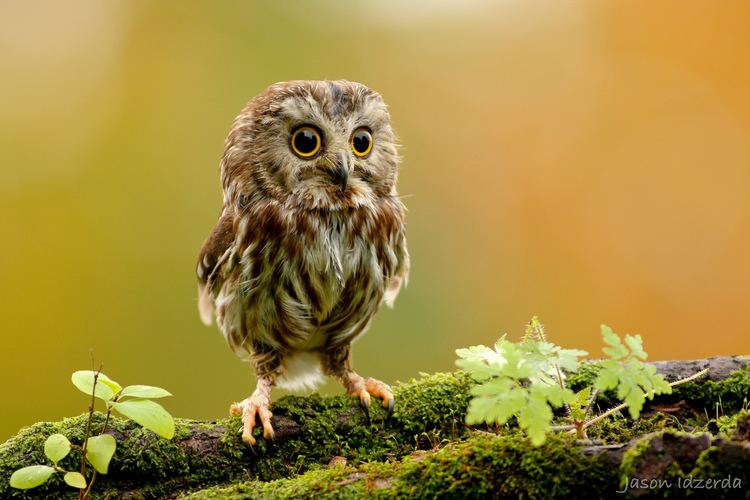 | ||
Similar Owl, Bird, Barred Owl, Aegolius, Screech owl | ||
Virtual ornithology northern saw whet owl biology
The northern saw-whet owl (Aegolius acadicus) is a small owl native to North America.
Contents
- Virtual ornithology northern saw whet owl biology
- Northern saw whet owl s impressive head control
- Description
- Voice
- Hearing
- Habitat
- Nesting
- Feeding
- References
Northern saw whet owl s impressive head control
Description
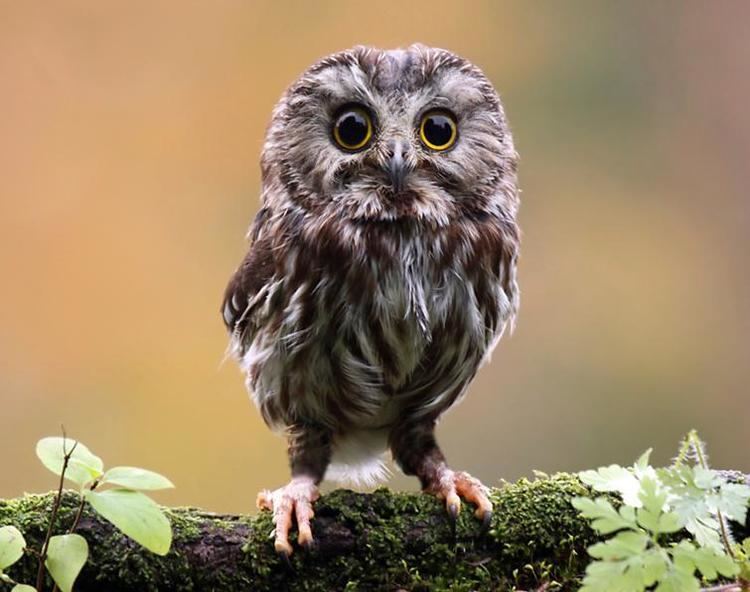
The scientific description of one of the sub-species of this owl is attributed to the Rev. John Henry Keen who was a missionary in Canada in 1896. Adults are 17–22 cm (6.7–8.7 in) long with a 42–56.3 cm (16.5–22.2 in) wingspan. They can weigh from 54 to 151 g (1.9 to 5.3 oz) with an average of around 80 g (2.8 oz), making them one of the smallest owls in North America. They are close to the size of an American robin. The northern saw-whet owl has a round, light, white face with brown and cream streaks; they also have a dark beak and yellow eyes. They resemble the short-eared owl, because they also lack ear tufts, but are much smaller. The underparts are pale with dark shaded areas; the upper parts are brown or reddish with white spots. They are quite common, but hard to spot.
Voice
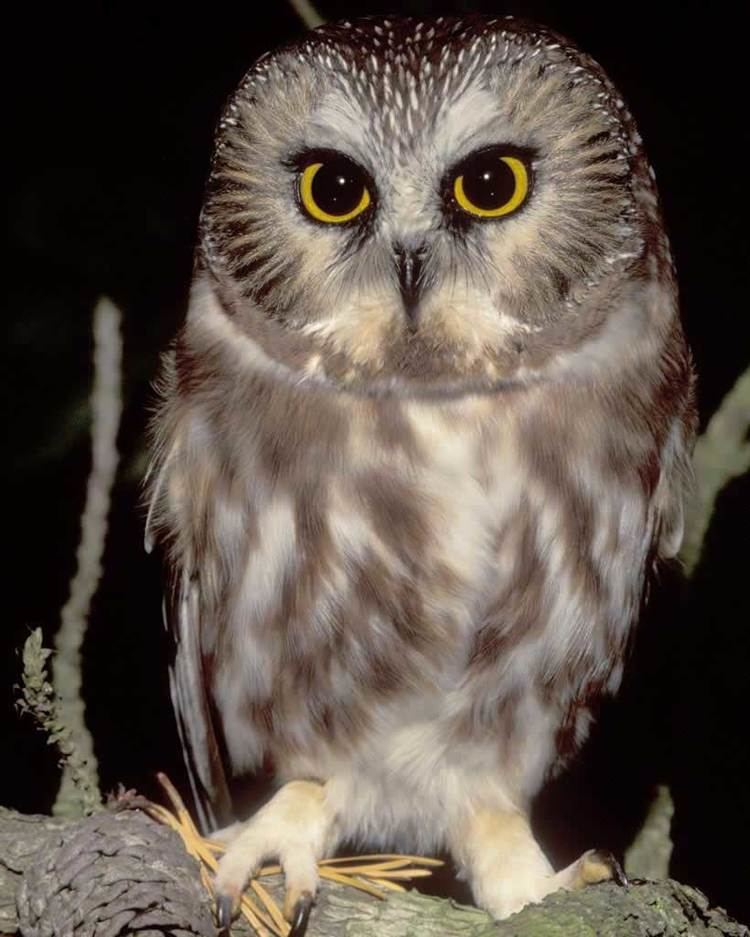
The northern saw-whet owl makes a repeated tooting whistle sound. Some say they sound like a saw being sharpened on a whetstone. They usually make these sounds to find a mate, so they can be heard more often April through June when they are looking for mates. Despite being more common in spring, they do vocalize year round.
Hearing
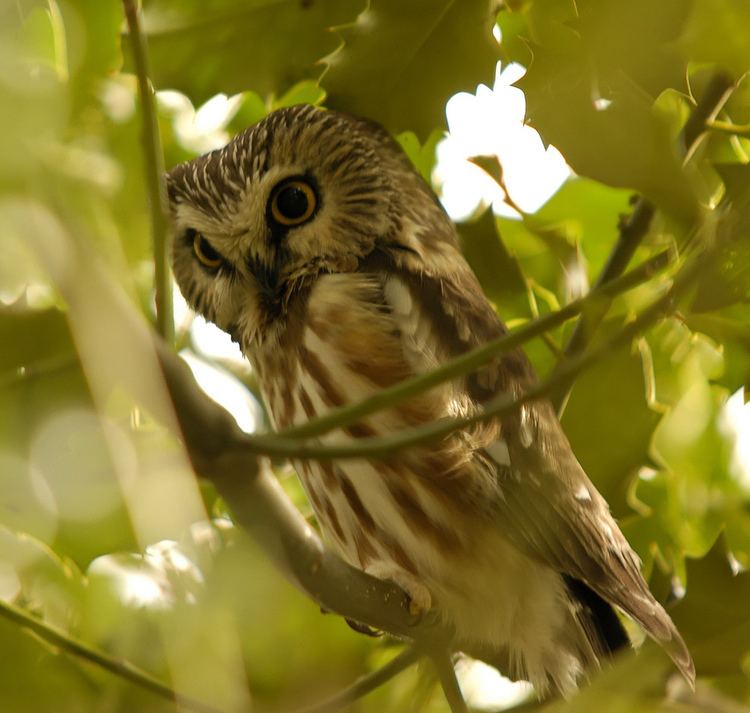
The northern saw-whet owl has a very sophisticated hearing. It is due to vertically asymmetrical ears and different shape of the ear openings. Because the sound reaches the ears at a different time and is of different intensity, the northern saw-whet owl can very precisely localize its prey. Such accurate sound localization allows it to hunt in a complete darkness by hearing alone.
Habitat
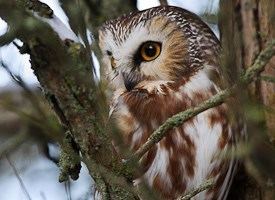
Their habitat is coniferous forests, sometimes mixed or deciduous woods, across North America. Most birds nest in coniferous type forests of the North but winter in mixed or deciduous woods. They also love riparian areas because of the abundance of prey there. They live in tree cavities and old nests made by other small raptors. Some are permanent residents, while others may migrate south in winter or move down from higher elevations. Their range covers most of North America including southeastern Alaska, southern Canada, most of the United States and the central mountains in Mexico. The invisible map shows where they breed and the areas where they can live throughout the year.
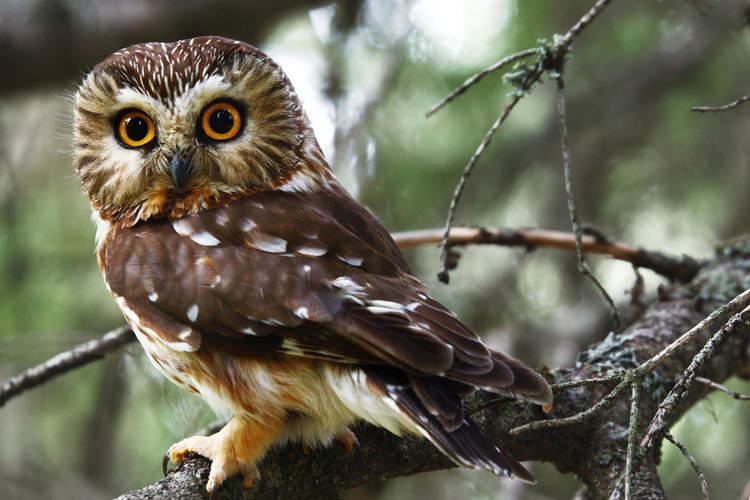
Some have begun to move more southeast in Indiana and neighboring states. Buidin et al. did a study of how far north the northern saw-whet owls breed and they found that they can breed northward to > 50° N, farther than ever recorded before. Their range is quite extensive and they can even breed in the far north where most birds migrate from to breed. They are an adaptive species that can do well in the cold.
Nesting
Northern saw-whet owls lay about five or six white-colored eggs in natural tree cavities or woodpecker holes. The father does the hunting while the mother watches and sits on her eggs. Females can have more than one clutch of eggs each breeding season with different males. Once the offspring in the first nest have developed their feathers the mother will leave the father to care for them and go find another male to reproduce with. This type of mating is sequential polyandry. They compete with boreal owls, starlings and squirrels for nest cavities and their nests may be destroyed or eaten by those creatures as well as nest predators such as martens and corvids. Saw-whet owls of all ages may be predated by any larger species of owl, of which there are at least a dozen that overlap in range. They are also predated by Accipiter hawks, which share with the saw-whet a preference for wooded habitats with dense thickets or brush.
Feeding
These birds wait on a high perch at night and swoop down on prey. They mainly eat small organisms with a focus on small mammals in their diet. A test done by Swengel and Swengel found that the northern saw-whet owls most often eat deer mice, 67% and voles, 16% of the time in Wisconsin. A similar test done by Holt and Leroux in Montana found that these owls ate more voles than other mammal species. This shows that these owls can change their main prey depending on what is available. Also researched by Holt and Leroux was the eating habits of northern saw-whet owls and northern pygmy owls and found that they prey on different animals for their main food source, showing that they can adapt not only depending on the prey but also with the other predators in the areas where they live.
A study by Engel et al. (2015) suggest that the Northern Saw-whet Owl’s diet may vary in the winter. On average, the owl’s diet consists mostly of small prey. Studies by Swengel and Swengel (1992) showed that Midwest owls preferred a diet of deer mice (Peromyscus) and shrew (Sorex cinereus and Blarina brevicauda). This contrasted to what was discovered in Chain O'Lakes State Park, Illinois, during the winter of 1987-88. At times, Northern Saw-whet owls may hunt larger prey, such as meadow vole (M. pennsylvanicus).
Other mammals preyed on occasionally include shrews, squirrels (largely chipmunks and red squirrels), various other mice species, flying squirrels, moles and bats. Also supplementing the diet are small birds, with passerines such as swallows, sparrows, kinglets and chickadees favored. However, larger birds, up to the size of rock pigeon (which are typically about 4 times as heavy as a saw-whet) can even be taken. On the Pacific coast they may also eat crustaceans, frogs and aquatic insects. Like many owls, these birds have excellent hearing and exceptional vision in low light.
